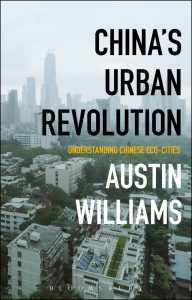Moving India
Austin Williams | November 2007
The Indian railway holds misty-eyed memories for hardened travellers, but even for those who have never ventured to the continent it symbolises both the history and mystery of that vast country. With 39, 500 miles of passenger rail – twice the length of the British rail network – India still recalls the era of steam trains, tea and tiffin. In his ‘Great Railway Bazaar’ travel writer Paul Theroux detailed romantic sounding train names and rail routes; from the Mandalay Express to the Howrah Mail and The Grand Trunk Express. While many of us were preoccupied with the fall of the Berlin Wall, Michael Palin was making a leisurely TV journey from Bombay (Mumbai) to Madras (Chennai) in a 1958 diesel-electric train made in Newton-le-Willows. Rudyard Kipling considered India’s railway yards to be the ‘birthplace of inventions’; while, a century later, veteran BBC reporter Sir Mark Tully says that it charts a ‘middle way between progress and tradition.’ But while these poetic paeans to steam travel pepper the Western press, the drive for progress on the Indian sub-continent has caught up with, and rapidly overtaken, tradition. Electrification of the entire rail network is still on the cards, and scheduled for completion by 2020, but maybe other transport technologies will have taken over by then. The Bhopal Shatabdi Express, with a top speed of 87mph is the fastest train on the Indian network, but even though nothing about the Indian transport network is ever certain, if things go to plan, magnetic-levitation (Maglev) trains could soon be transporting people at over 400 mph between cities.
While Britain applauds the Channel Tunnel rail link (at 85 miles, the first new passenger rail route constructed in the UK for over 100 years) Indian railways are on the up and up (and I’m not just referring to the construction of the new 180 mile rail line to the Kashmiri hill station at Srinagar). In a national economy growing by nearly 9 per cent per annum, Indian railways has just posted returns of £1.3 billion, three times that recorded in 2001 – a result of massive increases in freight traffic. That amount is estimated to be the exact cost of the construction of the ambitious Mumbai-Delhi maglev system. By shortening the journey time from 18 hours to three hours, maybe it is a price worth paying, especially as India is posed to take over from Japan as the world’s third largest economy. With 70 per cent of India’s population less than 35 years of age, this new generation of businessmen and women have probably even less of an attachment to a bygone Indian steam age than at any time since Independence. Maybe eco-tourists could be allowed to get their ‘authentic experience’ on the colonial rolling stock; while modern Indians could whiz from city to city on the Maglev to get things done.
However, while the Maglev still remains only a distant possibility, the Indian aviation industry is already growing at an unprecedented rate. Rather than confronting the bureaucracy of the state-regulated railway system and taking three days to cross the country, Indians can now have access to distant family and friends in a few hours. Today, one aeroplane is being built every month. Vijay Mallya, known as India’s Richard Branson – who runs Kingfisher Airlines (named after his Kingfisher beer) – has expanded his airline business with a series of mergers so that he now owns 71 aircraft predominantly operating in the low cost sector. Two years ago the total Indian passenger fleet had 170 aircraft, today it is double that. It is scheduled to comprise 550 planes by 2010 and peak at 1100 in 2020. But even this masks the growth in the numbers of people. Between April and September 2006 – when the latest figures are available – there was a 44 per cent growth in internal flights and it is predicted that by 2020, 400 million Indians will be flying regularly. As India’s civil aviation minister, Praful Patel says, this is certainly an ‘air travel revolution.’
However, the real expression of social mobility is the personal, private motor car. Until recently, car ownership was the preserve of only a handful of politicians, film stars and business leaders, but Tata, the massive steel and manufacturing company wants to democratise mobility in the same way that Henry Ford did for Americans, over 100 years ago. Its dream of an Indian one lakh (approximately £1200) ‘people’s car’ is being realised and will be launched in 2008. Already other producers such as Ford, Honda and the original ‘Volkswagen’ are planning their own versions in order to capitalise on the aspiration for decent, comfortable, reliable, affordable, liberating mobility for ordinary aspiring drivers. Habib Motors in Pakistan has launched an appallingly bad variation, and Sri Lanka is marketing a pug-nosed microcar for around £3000. A spokesperson for a leading Indian NGO specialising in sustainable natural resource management says that the sale of small cars will be ‘an environmental disaster… (but) it is hard to get people to see beyond their immediate desires.’ Chris Rapley, the new head of the British Science Museum who advocates a global population reduction of one million says: ‘I am not advocating genocide… (but for) fewer people to drive cars and use electricity.’ Rather than bowing to such Malthusian demands for restraint, Goldman Sachs predicts that there will be over 600 million cars in India by 2050 (the highest national figure in the world) and intends that nuclear power will provide 25% of the country’s electricity needs in the same timeframe.
Mercifully, the nay-sayers are being ignored. Ordinary peoples’ aspirations for material improvements in order to escape their everyday drudgery are helping to fuel even greater advantages for society as a whole. Meanwhile, back in the UK, the British Council boasts that twelve tuk-tuks (scooter-engined, open-sided, three-wheelers) have been imported from India as a sustainable means of travelling around cities. While the Indian government initiates a 15-year project to widen, resurface and maintain over 40,000 miles of national highways; British Transport Minister, Dr Stephen Ladyman recently boasted that ‘from 2006–07 through to 2007–08 we expect to complete two national schemes, which collectively will deliver approximately 6.3 miles of road improvements to the network.’
Obviously, in India, all is not rosy in the garden. With 300 million Indians living on less than US$1 a day and 45% of Indian under-fives malnourished, this is not a simple story of national advancement. Approximately 60 percent of Mumbai’s 16 million people live in slum conditions. However, the genie is out of the bottle and demand for social improvement is filtering down the chain. It is the aspiration to escape such degrading conditions that are exemplified in the various forms of social and physical mobility. Even though there is a growing influence of the United Nations Habitat programme that hints strongly for people to stay in their villages and not move into cities, relentless poverty still drives families to seek a better life. In fact, in some of the larger cities – such as Mumbai and Kolkata – there are more people moving out than moving in. Such are the potential opportunities made available by economic development, more centres of growth and improved transportation.
Unfortunately, the Western environmental viewpoint tends to eulogise India’s slum conditions. Friends of the Earth are quoted as saying that ‘there is a lot to learn from the developing world, where a scavenger mentality, grass roots recycling and sheer necessity can lead to imaginative leaps in redeploying waste.’ The Observer notes that Dharavi, Mumbai’s 175-hectare slum that houses over a million ‘residents’, should be viewed as one of the ‘most inspiring economic models in Asia’.
While Channel 4 maintains that living on a dump can be a meaningful, learning experience, the rag-pickers of India who have to do it for real could tell a different story. Unfortunately, the relentless environmental sanctimony from the West has consequences. Recent plans to upgrade 35, 000 families from the slums of Mumbai’s Sanjay Gandhi park have been endorsed by environmental groups such as the Bombay Environmental Action Group, only because they believe that the encroachment of people is upsetting the wildlife, rather than wishing to protect people from the local marauding panthers. Fortunately, other groups more concerned about human rights, insisted that this urban clearance strategy take account of the displaced people. As a result, many slum-dwellers previously without mains electricity, sanitation or water supply are now moving into purpose-made accommodation. Admittedly this relocation is to a dislocated suburb, but the amenities are potentially transformative.
Plans to transform Mumbai into Shanghai maybe wishful thinking, but are no less ambitious for that. Already schemes are underway to construct a Mumbai-metro rail link, develop the trans-harbour project, build a ring railway and truck terminal, continue with extensive urban infrastructural developments and the upgrade of the main King Edward Memorial Hospital. Behind these improvements – what is often called ‘beautification’ – lie the reality of slum clearances and evictions. But if the dynamic improvements within the city can be made tangible, many of the homeless eventually ought to be happy with the results. It is only, predominantly in the West – or amongst NGOs with Western or environmentalist sensitivities – that the slum-dwelling lifestyle can be made into some kind of sentimental cultural activity.
Things are moving fast in India. In Chandigarh, the Governor General wants to realise Le Corbusier’s original plan of setting up a Museum of Knowledge, accompanied by a ‘Theme-cum-Amusement Park’ and a ‘Multimedia-cum-Film City’ as well as an “Aquatic Park” and a “Milk Village”. Some of India’s plans may not be everyone’s cup of tea, but more worryingly, while infant mortality is 35 per cent in Chandigarh alone, it has just declared itself the first smoke free city in India. It seems that as India develops at a runaway pace, environmentalism, and Western-style health panics are the last remaining colonial exports.






